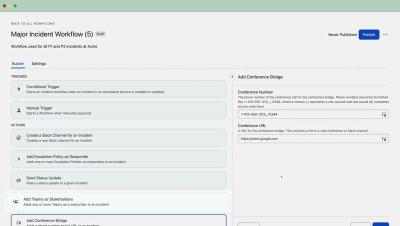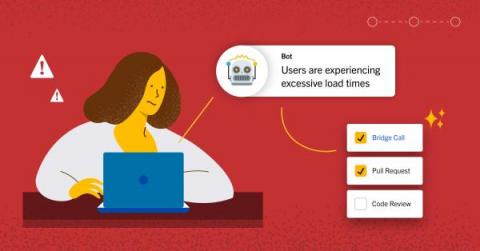Operations | Monitoring | ITSM | DevOps | Cloud
Incident Response
Playbooks: A new superpower for designers
From one designer to another, you should know why Playbooks is a fantastic addition to your design tool belt. Playbooks were designed with technical workflows in mind, from incident response to release management, but its flexibility makes it a perfect fit for any repeated process. I love it for creating reusable templates of design checklists and an excellent way to do design review sign-off.
PagerDuty Incident Workflows for Automated Incident Response Demo
How Automation Playbooks Double Down on the Value of SOARs
So you’ve set up a Security Orchestration, Automation and Response (SOAR) platform. You’re now ready to detect, respond to and remediate whichever threats cyberspace throws at you, right? Well, not necessarily. In order to deliver their maximum value, SOAR tools should be combined with playbooks, which can be used to drive SOAR systems and ensure that SOARs remediate threats as quickly as possible — in some cases, without even waiting on humans to respond.
How to implement a mature incident response strategy
In 2021, the Biden administration issued an executive order outlining that the government and private sector need to work together to combat cyberthreats and improve the nation’s collective cybersecurity stance. As cyberattacks become more common and more costly, the United States — like other nation-states — needs to do everything it can to prevent attacks and rapidly respond to them when they occur, which requires modernizing its approach to incident response.
Expanding Incident Response with Microsoft Teams
Last week we launched a number of features across the PagerDuty Operations Cloud portfolio to help teams minimize downtime and protect customer experience. One of the areas where PagerDuty continues to invest is collaboration and communication during incident response to ensure that all impacted stakeholders across the business are updated in real-time.
3 questions to ask in the build vs buy debate for incident response tooling
As a former incident responder and now as a responder advocate for FireHydrant, I’ve seen the “build vs. buy” debate play out many times. In fact, I even supported the tool that former employers used for managing incidents for years before they decided to buy (more on that in a future blog post).
6 techniques for better incident response
The ITIL definition of an incident is “an unplanned interruption to or a reduction in quality of an IT Service or unavailability of the service”. An incident could be caused by an asset that is not functioning properly or a network failure, or a human error.
Why 'owning Services' is critical for effective Incident Response
Security Basics: Incident Response and Automation
Incident response is one of the most challenging tasks that IT teams face. It's challenging not just because it typically involves many stakeholders and moving pieces, but also because teams usually face pressure to respond as quickly as possible. That's why investing in incident response automation is a wise choice. Although it may not be possible to automate every aspect of every incident response workflow, being able to automate at least the major elements of incident response will yield incident management processes that are faster, more reliable, and more consistent.Keep reading to learn about the components of incident response and which incident response activities to start automating.











